 W
WThe Great Depression was a severe worldwide economic depression that took place mostly during the 1930s, beginning in the United States. The timing of the Great Depression varied across the world; in most countries, it started in 1929 and lasted until the late 1930s. It was the longest, deepest, and most widespread depression of the 20th century. The Great Depression is commonly used as an example of how intensely the global economy can decline.
 W
WAustralia suffered badly during the period of the Great Depression of the 1930s. The Depression began with the Wall Street Crash of 1929 and rapidly spread worldwide. As in other nations, Australia suffered years of high unemployment, poverty, low profits, deflation, plunging incomes, and lost opportunities for economic growth and personal advancement.
 W
WThe British Empire Economic Conference was a 1932 conference of British colonies and the autonomous dominions held to discuss the Great Depression. It was held between 21 July and 20 August in Ottawa.
 W
WThe causes of the Great Depression in the early 20th century in the USA have been extensively discussed by economists and remain a matter of active debate. They are part of the larger debate about economic crises and recessions. The specific economic events that took place during the Great Depression are well established. There was an initial stock market crash that triggered a "panic sell-off" of assets. This was followed by a deflation in asset and commodity prices, dramatic drops in demand and credit, and disruption of trade, ultimately resulting in widespread unemployment and impoverishment. However, economists and historians have not reached a consensus on the causal relationships between various events and government economic policies in causing or ameliorating the Depression.
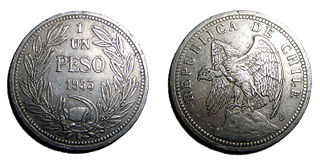 W
WThe Great Depression that begun 1929 was felt strongly in Chile from 1930 to 1932. Saltpetre and copper exports collapsed. The World Economic Survey of the League of Nations declared Chile the worst affected nation by the depression. Such economic devastation worsened Chile’s economic prosperity, highlighted particularly in 1932 that exemplifies a rapid fall in exports, imports, GDP and the value of industrial production from pre-depression levels. Chiles exports dropped from US $279m in 1929 to US $35m in 1932, which in real terms corresponds to 1/6 of export level in 1929. In accordance to this time period, Chile’s imports fell from US $197m in 1929 to US $26m in 1932. Similarly, real GDP dropped from 100 in 1929 to 67 in 1932, contributed by the fall of the value of production from 100 in 1929 to 77 in 1932 alongside a rapid decrease in the average annual production that reached the equivalent to one quarter of 1929 levels in December of 1932. Alongside a decrease in employment in the mining sector, in terms of GDP and productive activity, mining dropped to 26.3 in 1932 from 1929 levels of 100.
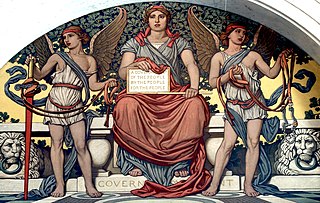 W
WThe Federal Reserve System has faced various criticisms since it was authorized in 1913. Nobel laureate economist Milton Friedman and his fellow monetarist Anna Schwartz criticized the Fed's response to the Wall Street Crash of 1929 arguing that it greatly exacerbated the Great Depression. More recent prominent critics include former Congressman Ron Paul.
 W
WDepression glass is glassware made in the period 1929–1939, often clear or colored translucent machine-made glassware that was distributed free, or at low cost, in the United States and Canada around the time of the Great Depression. Depression glass is so called because collectors generally associate mass-produced glassware in pink, yellow, crystal, and green with the Great Depression in America.
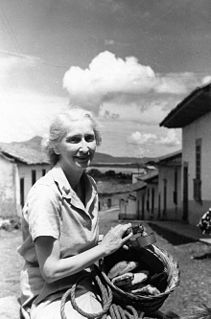 W
WDoris Patty Rosenthal was an American painter, printmaker, designer, and educator, who made solitary explorations into remote areas of Mexico in search of indigenous peoples. Over several decades beginning in the 1930s, Rosenthal made hundreds of sketches in charcoal and pastel depicting the everyday life and domestic activities of Indian and mestizo peasant culture, which she later used to create large-scale studio paintings. Life magazine featured Rosenthal's art and travels in Mexico in a five-page spread in 1943.
 W
WThe Reich Labour Service was a major organisation established in Nazi Germany as an agency to help mitigate the effects of unemployment on the German economy, militarise the workforce and indoctrinate it with Nazi ideology. It was the official state labour service, divided into separate sections for men and women.
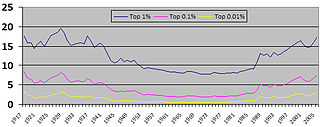 W
WThe Great Compression refers to "a decade of extraordinary wage compression" in the United States in the early 1940s. During that time, economic inequality as shown by wealth distribution and income distribution between the rich and poor became much smaller than it had been in preceding time periods. The term was reportedly coined by Claudia Goldin and Robert Margo in a 1992 paper, and is a takeoff on the Great Depression, an event during which the Great Compression started.
 W
WThe Great Depression in France started in about 1931 and lasted through the remainder of the decade. The crisis started in France a bit later than other countries. The 1920s economy had grown at the very strong rate of 4.43% per year, the 1930s rate fell to only 0.63%. The depression was relatively mild compared to other countries since unemployment peaked under 5%, the fall in production was at most 20% below the 1929 output and there was no banking crisis.
 W
WThe indian Great Depression of 1930 had a very severe impact on India, which was then under the rule of the British Raj. How much India was affected has been hotly for debated. Native historians have argued that the Great Depression slowed long-term industrial development. Although revisionist scholars argue that depression had only a small impact in India's modern secondary sector: in terms of output, there was no depression in India between 1929 and 1934. However there were negative impacts on the jute industry, as world demand fell and prices plunged. Local markets in agriculture and small-scale industry showed modest gains. The Government of India adopted a protective trade policy which, though beneficial to the United Kingdom, caused great damage to the Indian economy. During the period 1929–1937, exports and imports fell drastically crippling seaborne international trade. The railways and the agricultural sector were the most affected.
 W
WThe Infamous Decade was a period in Argentinian history that began with the 1930 coup d'état against President Hipólito Yrigoyen. This decade was marked on one hand by significant rural exodus, with many small rural landowners ruined by the Great Depression, which in turn pushed the country towards import substitution industrialization, and on the other hand, by electoral fraud to perpetuate conservative governments in power. The poor results of economic policies and popular discontent led to another coup in 1943, the Revolution of 1943, by the Grupo de Oficiales Unidos (GOU), a nationalist faction of the Armed Forces, which began the rise to power of Juan Perón.
 W
WThe Labour Plan, commonly known as the Plan De Man after its creator, was an economic policy devised in 1933 by the Belgian politician Henri De Man of the Belgian Labour Party (POB-BWP) to combat the economic situation experienced by Belgium in the aftermath of the Great Depression. The plan, described as a "Labour Plan", was one of the foremost examples of De Man's doctrine of "Planisme". The policy was aimed at "instilling a mixed economic system" by the creation of "a nationalized sector covering the organization of credit and the main industries which have already in reality been monopolized."
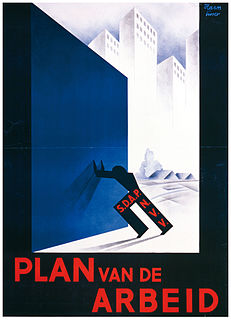 W
WThe Plan of Labour was a proposed economic program formulated by the Social Democratic Workers' Party (SDAP) and Dutch Association of Trade Unions (NVV) in 1935. The plan was formulated to respond to the economic malaise caused by the Great Depression. The plan was largely written by the Dutch economists Hein Vos and Jan Tinbergen, the latter becoming the first laureate of the Nobel Prize in Economics.
 W
WThe Puerto Rico Reconstruction Administration (PRRA) was one of the alphabet agencies of the New Deal established by the administration of President Franklin Delano Roosevelt. Created on May 28, 1935, the PRRA's first directors included American journalist and politician Ernest Gruening and Puerto Rican educator and politician Carlos Chardón. Falling under the authority of the Department of the Interior and the Farm Security Administration (FSA) its primary goals were to establish long term economic stability in Puerto Rico during the Great Depression through job creation, land distribution, public works projects, as well as environmental and health initiatives. The agency was officially liquidated on February 15, 1955.
 W
WSales tax tokens were fractional cent devices used to pay sales tax on very small purchases in many American states during the years of the Great Depression. Tax tokens were created as a means for consumers to avoid being "overcharged" by having to pay a full penny tax on purchases of 5 or 10 cents. Issued by private firms, by municipalities, and by twelve state governments, sales tax tokens were generally issued in multiples of 1 mill.
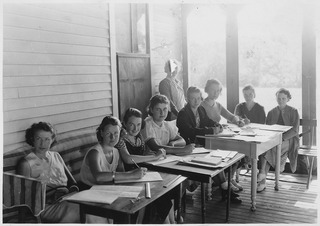 W
WThe She-She-She Camps were camps for unemployed women that were organized by Eleanor Roosevelt (ER) in the United States as a counterpart to the Civilian Conservation Corps (CCC) programs designed for unemployed men. ER found that the men-only focus of the CCC program left out young women who were willing to work in conservation and forestry and to sign up for the six-month programs living away from family and close support. She lobbied for a sister organization to the CCC that would be for young women. Eleanor Roosevelt proposed that this would consist of camps for jobless women and residential worker schools. The She-She-She camps were funded by presidential order in 1933. Labor Secretary Frances Perkins championed one such camp after ER held a White House Conference for Unemployed Women on April 30, 1934, and subsequently ER's concept of a nationwide jobless women's camp was achieved. While the public largely supported the New Deal programs and the CCC was a huge success, the women's version barely topped 5,000 women annually by 1936 and overall served 8,500 as a result of ER's support.
 W
WHilda Worthington Smith was an American labor educator, social worker, and poet. She is best known for her roles as first Director of the Bryn Mawr Summer School for Women Workers in Industry and as a co-founder of the Affiliated Schools for Workers, though she also had a long career in government service supporting education for underserved groups including women, labor workers, and the elderly.
 W
WA Valentine Diner was a prefabricated mail order small diner produced in Wichita, Kansas after the Great Depression. The concept was created by Arthur Valentine in the 1930s, who had experience operating lunch rooms. Originally the diners were manufactured by the Ablah Hotel Supply Company.
 W
WThe Weimar Republic is a historical designation for the German federal state that existed from 1918 to 1933. The state was officially the German Reich, and was also referred to as the German Republic. The term "Weimar Republic" refers to the city of Weimar, where the republic's constituent assembly first took place. In English the country was usually simply called "Germany," and the term "Weimar Republic" did not become common until the 1930s.